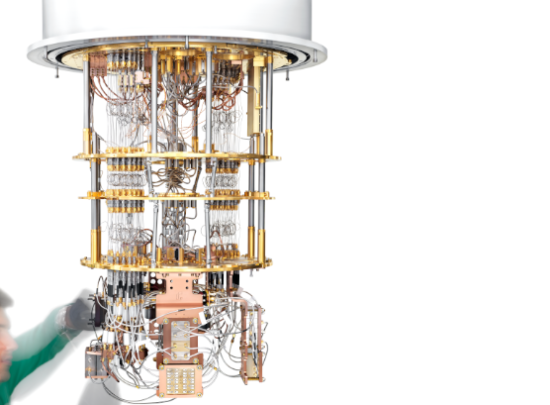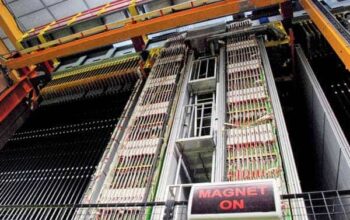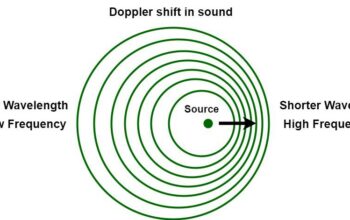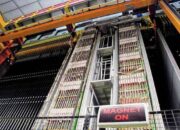As the grand edifice of quantum computing continues to rise above the horizon of technological possibility, the question that looms large is: when will the quantum computing bubble burst? With staggering investments and fervent speculation, the field is poised at a precipice, teetering between visionary promise and potential disillusionment. This discourse endeavors to explore the intricacies surrounding this query, elaborating on the dynamics of hype, promise, and the perennial challenge of tangible realization.
The term “quantum computing bubble” can conjure images of inflated valuations, exuberant narratives, and unsustainable expectations that form the fabric of speculative phenomena in emerging technologies. It is crucial to contextualize this notion within the framework of historical technological booms and busts, notably the dot-com bubble of the late 1990s. This bubble epoch was characterized by an insatiable appetite for investment in tech enterprises, many of which failed to deliver on their grandiose projections. As history teaches us, periods of intense speculation often precede stark corrections, raising a poignant inquiry—will quantum computing succumb to a similar trajectory?
At its core, quantum computing hinges on the principles of quantum mechanics, promising to transcend classical computational limitations through the utilization of qubits. Unlike their classical counterparts, qubits can exist in superpositions, enabling exponential increases in processing capabilities, particularly for problems intractable for traditional systems. This revolutionary potential has captured the imaginations of investors, technologists, and policy-makers alike, propelling the field into the limelight. However, it is here that the optimism begins to dilute into skepticism. The experimental nature of qubit fabrication and error correction remains a formidable barrier, necessitating breakthroughs that, although plausible, are yet to be fully realized.
One salient aspect of this phenomenon is the disparity between quantum hardware development and software sophistication. While significant strides have been made in quantum hardware—from superconducting circuits to trapped ions—the accompanying software ecosystem remains nascent. Quantum algorithms that can effectively utilize these hardware advantages are still in their infancy, often constrained by formidable complexities associated with noise and uncertainty. This dichotomy prompts apprehension—can the development of algorithms keep pace with hardware advancements, and what if it cannot?
Investor enthusiasm surrounding quantum technology is palpable. Governments and venture capitalists alike have funneled billions of dollars into research and development, creating a fertile ground for innovation. Yet, in parallel, this financial onslaught raises concerns about sustainability and discerning which ventures will eventually bear fruit. For every successful startup promising groundbreaking quantum solutions, there remain numerous others that lack a coherent business model or viable application. Such discrepancies highlight an important consideration: burgeoning industries often lose sight of the market needs amidst technological delirium. The bubbling fervor can lead to pronounced overestimations of readiness, deluding stakeholders about the timeline for practical applications.
Furthermore, the competitive landscape within the quantum space creates an intoxicating mix of intrigue and uncertainty. Major corporations, academic institutions, and governments are engaged in a frenetic race, each seeking to seize the proverbial quantum crown. However, this hyper-competition can exacerbate pressures to deliver results swiftly, often at the expense of thorough exploration and validation of technologies. What if the relentless competition results in premature deployments that culminate in failures, thereby damaging credibility within the scientific community? The implications of such a scenario could precipitate a ripple effect, wherein investor confidence wanes, creating an adverse outcome for even the most promising endeavors.
Given these complexities, researchers, developers, and investors find themselves grappling with an existential quandary: can the monumental expectations surrounding quantum computing be reconciled with empirical realities? A confluence of factors—technological maturity, algorithmic development, market demand, and competitive pressures—will determine whether the quantum computing bubble is a mere illusion or a potent force for lasting change. This reflection amplifies the urgency to adopt a more tempered outlook, one that balances ambition with realism.
Moreover, it is imperative to consider the role of interdisciplinary collaboration as a potential salve for the impending bubble. By integrating insights from areas such as materials science, computer science, and engineering, stakeholders can expedite advancements and mitigate risks. Diverse perspectives may illuminate pathways to overcoming the present barriers, leading to holistic solutions that transcend disciplinary boundaries. The cultivation of such collaborative efforts may well provide the stability needed to weather fluctuations and avert cataclysmic collapse.
The discourse surrounding the quantum computing bubble is ultimately a microcosm of humanity’s broader engagement with technological progress. As we stand at the crossroads of promise and peril, it becomes essential for the community to foster resilience and adaptability, allowing for iterative learning and growth. Whether or not the bubble bursts is contingent upon our collective ability to chart a course informed by empirical insights and critical reflection.
In the grand narrative of quantum computing’s evolution, the urgency of maintaining a dual focus on innovation and pragmatism will prove paramount. To navigate the tempestuous waters of potential market fluctuations, stakeholders must continuously interrogate their own assumptions, refining their expectations while remaining steadfast in their pursuit of groundbreaking advancements. As we linger on the threshold of quantum possibility, the inquiry lingers—when, indeed, will the quantum computing bubble burst? Only time will unveil this enigma, yet the journey toward discovery may offer insights as valuable as the answer itself.










